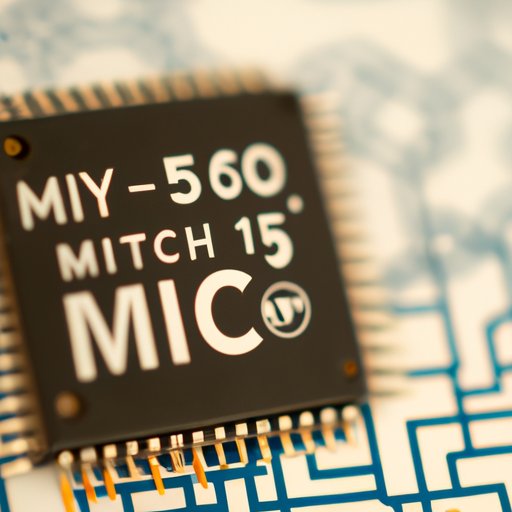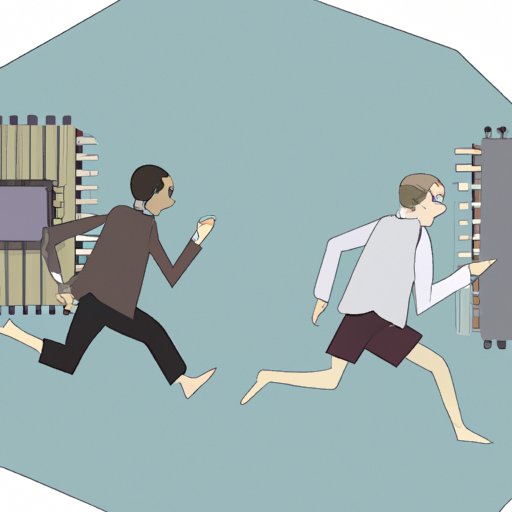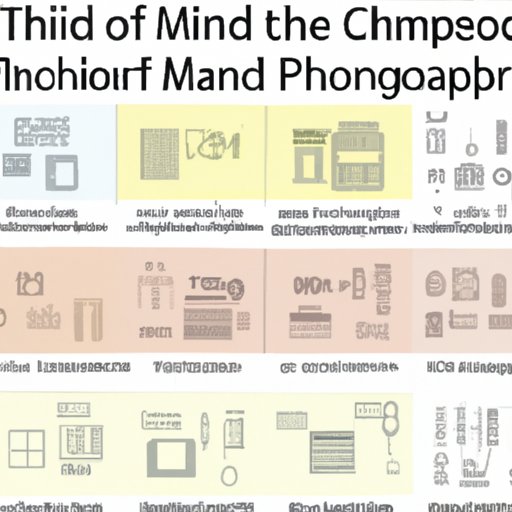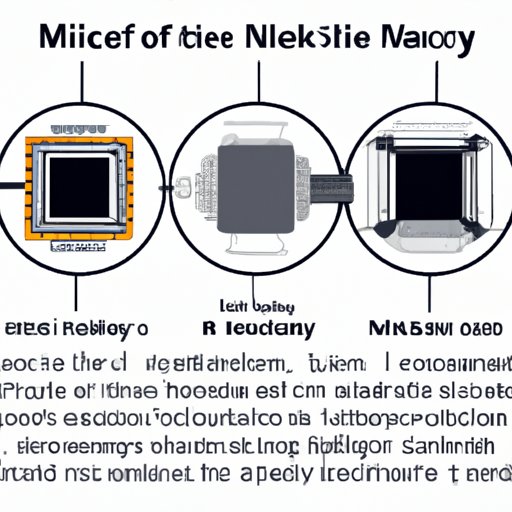Introduction
A microchip is an integrated circuit, or a small semiconductor device, that is used to store, process, and control data. It is also known as an integrated circuit chip or a silicon chip. This article will explore when the microchip was invented, who invented it, and the impact it has had on global technology since its invention.

A Historical Look at the Inventors of the Microchip
The invention of the microchip is credited to two inventors: Jack Kilby and Robert Noyce. Kilby worked for Texas Instruments in 1958 and was the first to create a working model of the microchip. He created this model by connecting several components together on a single piece of germanium. Noyce, on the other hand, worked for Fairchild Semiconductor and developed his own version of the microchip in 1959. His version was made of silicon, which was more reliable than Kilby’s germanium. Both inventors are credited with the invention of the microchip.
An Overview of Technological Advances in Computing with the Invention of the Microchip
The invention of the microchip revolutionized the world of computing. Prior to its invention, computers were much larger and slower than modern computers. With the invention of the microchip, computers became faster, smaller, and more powerful. This allowed for the development of more advanced technology such as smartphones, tablets, and other electronic devices. Additionally, the invention of the microchip enabled the development of artificial intelligence and machine learning, which has had a tremendous impact on the way we interact with technology today.
Exploring the Impact of the Microchip on Global Technology
The invention of the microchip has had a profound effect on global technology. Microchips are now used in almost every type of electronic device, from cars to medical equipment. They are also used to power many of the world’s most advanced technologies, such as self-driving cars, facial recognition systems, and robotics. Additionally, microchips are used in many industries, including aerospace, defense, and telecommunications. The invention of the microchip continues to shape the world of technology and is likely to remain an integral part of global technology for many years to come.

The Race to Develop the First Microchip and its Impact
The race between Kilby and Noyce to develop the first microchip was an intense one. Each inventor was determined to be the first to develop the new technology, and their success had a massive impact on the tech industry. Their inventions sparked a wave of innovation and investment in the tech industry, leading to a boom in the development of new technologies. This competition between the two inventors also changed the way companies develop new technology, as companies now focus more on speed and efficiency than ever before.

A Timeline of the Invention and Development of the Microchip
The invention of the microchip began in 1958 with Jack Kilby’s creation of a working model of the microchip. Robert Noyce followed suit in 1959, developing his own version of the microchip. Over the next decade, the microchip saw substantial advancements and improvements, such as the introduction of large-scale integration (LSI) in 1971. By 1975, the microchip had become the cornerstone of the tech industry, powering everything from computers to cell phones. In the decades since, the microchip has continued to evolve, becoming faster, smaller, and more powerful.
Conclusion
The invention of the microchip has had a profound impact on global technology, transforming the way we interact with technology. Its invention sparked a wave of innovation and investment in the tech industry, leading to a boom in the development of new technologies. From its invention in 1958 to its continued evolution today, the microchip has revolutionized the world of computing and remains an integral part of global technology.
(Note: Is this article not meeting your expectations? Do you have knowledge or insights to share? Unlock new opportunities and expand your reach by joining our authors team. Click Registration to join us and share your expertise with our readers.)
